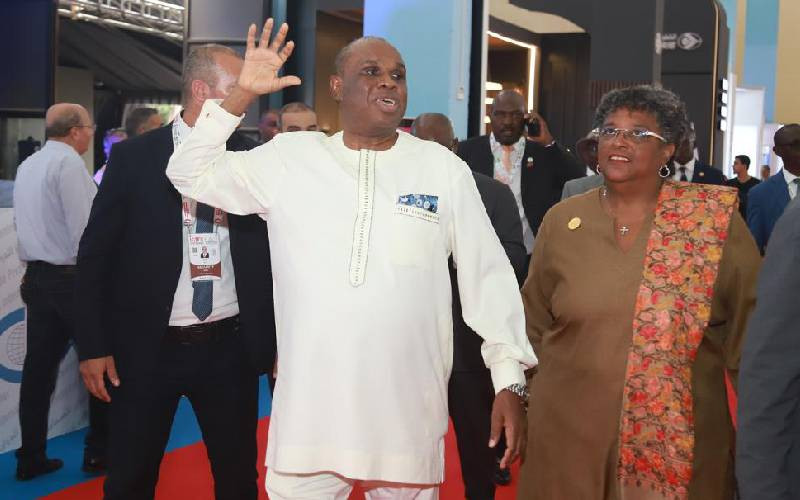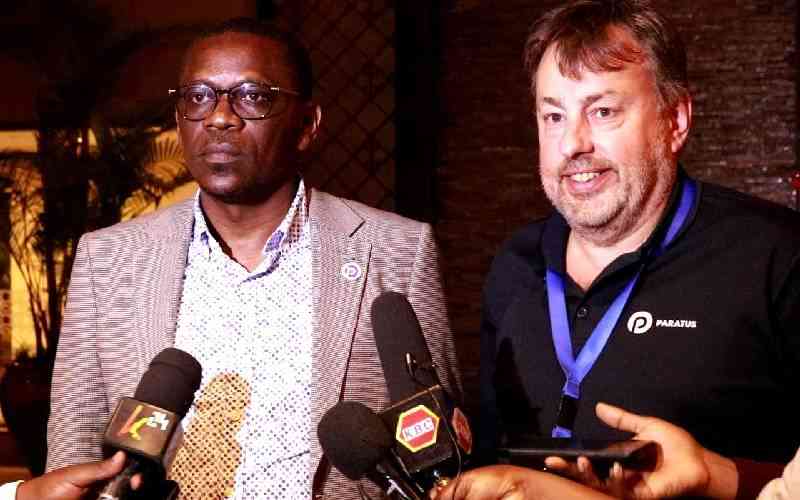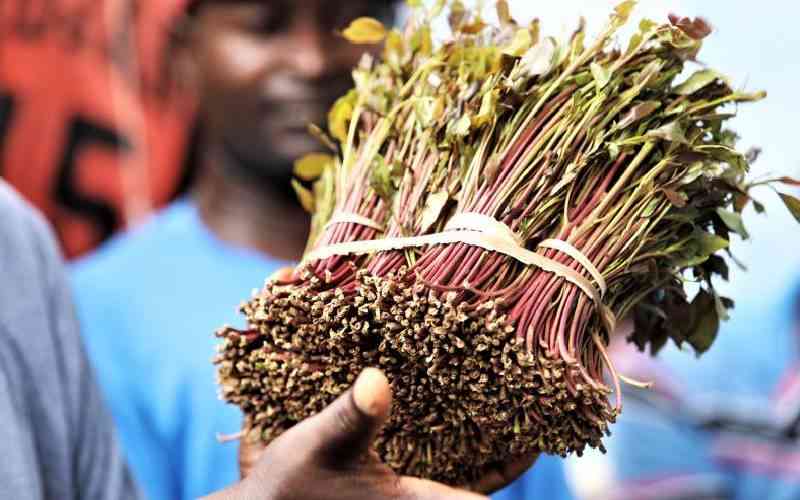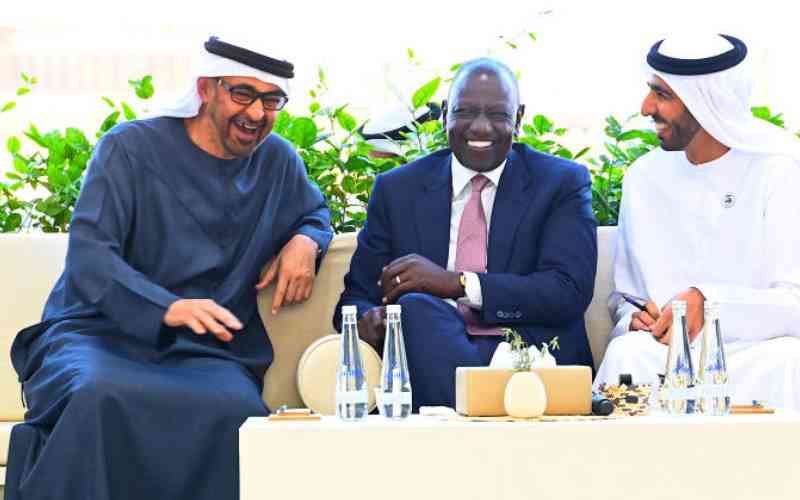President William Ruto (fourth right) and leaders from development finance institutions and commercial banks after signing a cooperation agreement to support the Africa Green Industrialisation Initiative (AGII) in Addis Ababa, Ethiopia, on September 8, 2025. [Courtesy]
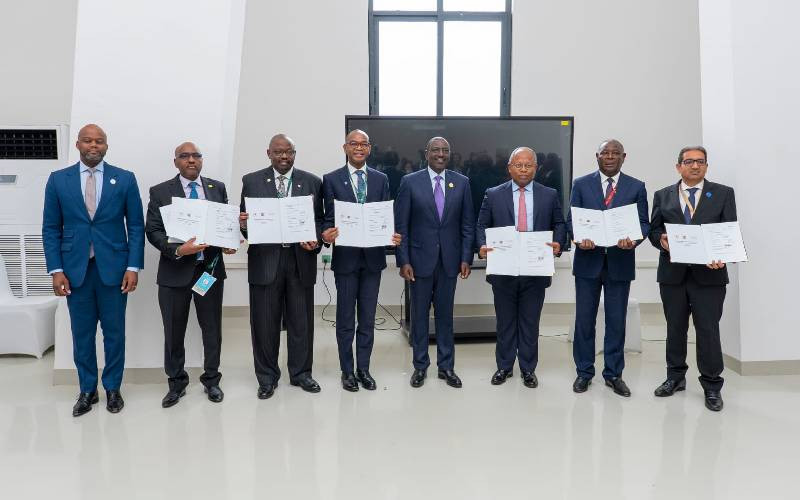
This week, African leaders and policy makers have converged in Addis Ababa, Ethiopia for the Africa Climate Summit 2.0. This is a gathering that builds on the 2023 forum held in Kenya where among other things, attendees are taking stock on the progress of the proclamations that emanated from the Nairobi Declaration.
At the centre of these discussions will be how to prop up the role of the African Green Industrialisation Initiative (AGII) and the Accelerated Partnership for Renewables in Africa (APRA), now considered as the accelerators of the continent’s industrial transformation, after their endorsement by the African Union early this year.
The initiative brings together financiers across the continent to mobilise resources, de-risk projects, and accelerate investments in renewable energy, sustainable industries, and climate-smart solutions.
For decades, Africa’s Industrialisation story has been written in the margins of global growth. The continent, rich in natural resources and human capital, has often been positioned as the world’s supplier of raw materials rather than a manufacturer of finished products. But as the global economy pivots toward low-carbon industrial growth, Africa has an unprecedented opportunity to rewrite this narrative.
At its core, AGII has its premises on multi-sectoral efforts that lean towards designing industries that are competitive in tomorrow’s marketplace. Basically, prioritising energy-intensive but high-value sectors including green steel, electro-fertilisers, battery and component assembly, agro-processing that can anchor domestic value chains and serve export markets in a climate-conscious world.
However, green Industrialisation cannot thrive without reliable, affordable energy. That is where the APRA comes in. With an ambition to double Africa’s renewable energy capacity by 2030, APRA is designed to crowd in investment, lower risks, and unlock large-scale deployment of solar, wind, geothermal, and hydropower projects to position Africa not just as a consumer of clean energy, but as a global leader in renewable supply chains.
Africa’s chance to industrialisation in the 21st century depends less on repeating yesterday’s fossil-fueled model and more on marrying two things that have long been treated separately. AGII and APRA are precisely those two halves complementary, politically backed and, if executed well will be transformational.
This vision will not be realized by mere talk-shops, it requires massive financial mobilization estimated at $2 trillion (Sh260 trillion) by 2030 for clean energy, infrastructure, and industry. Finance remains the biggest hurdle to scaling renewables.
Enter the African Continental Free Trade Area (AfCFTA), the trade pillar that unlocks economies of scale, harmonises regulation, enables cross-border power and goods flows, and of course, supercharges finance. For financiers, a continental market reduces offtake risk. For entrepreneurs, it means factories can sell across borders seamlessly and for governments, it means regional value chains can finally flourish.
Complemented by the Pan-African Payment and Settlement System (PAPSS), intra-African trade in green goods will become faster, cheaper, and more reliable.
History rarely offers second chances. Africa missed the first industrial revolution, arriving too late to benefit from coal and steam. It was marginalised during the second, when oil and assembly lines transformed Europe and Asia. The third, defined by digital technologies, found Africa still struggling with connectivity and infrastructure gaps. The fourth revolution defined by sustainability, clean energy, and green industry is Africa’s top prize to claim.
As a Pan-African banking institution focused on green growth, KCB Group has set the precedent as a critical player in resource mobilisation guided by our ambition to invest 25 per cent of the Group loan portfolio in green initiatives by the end of this year. Additionally, as an accredited entity of the Green Climate Fund (GCF) under category B, this means the bank can access between $50 million and $250 million per project.
Stay informed. Subscribe to our newsletter
There are real opportunities at stake. Africa’s young workforce, abundant critical minerals and rapidly growing domestic markets mean that, with green energy and industrial policy working together. However, time is not on our side as global markets are already rewarding low-carbon suppliers and moving investment to regions with secure, cheap green power. However, revolutions of such a nature are not won by declarations, they are won by decisive action, bold financing, and relentless execution.
- The writer is KCB Group CEO and chairman of Kenya Bankers Association

